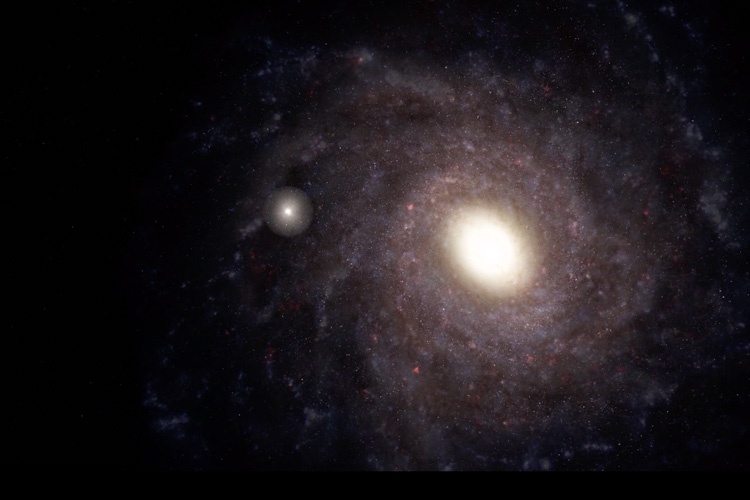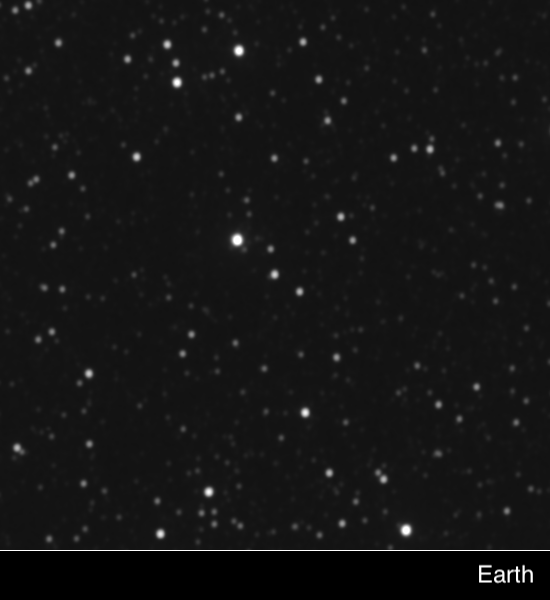Our Part of the Galaxy is Packed with Binary Stars
Binary star systems are everywhere. They make up a huge percentage of all known solar systems: from what we can tell, about half of all Sun-like stars have a binary partner. But we haven’t really had a chance to study them in detail yet. That’s about to change. Using data from the European Space Agency’s Gaia spacecraft, a research team has just compiled a gigantic new catalog of nearby binary star systems, and it shows that at least 1.3 million of them exist within 3000 light-years of Earth.
This detailed survey of our local galactic neighborhood offers an enormous sample of binary stars for researchers to dig into. Previous surveys of binary stars, like the Tycho and Hipparcos catalogs (which were compiled between 1997 and 2002), only found around 13,000 paired stars. The new Gaia survey sample size is 100 times larger, which will allow astronomers to make far more accurate models of star system formation.

Confirming the existence of a binary system isn’t an easy task. Two stars that appear close to each other in the sky from our perspective may actually be very distant from each other; they just happen to lay along a similar line of sight.
To find out if the stars are actually close to one another, astronomers rely on the parallax effect: the apparent motion of a distant object as the observer’s point of view changes. In other words, astronomers need to observe the distant stars twice, from two different positions in Earth’s orbit around the Sun. The stars’ positions in the sky will appear to change from one perspective to the second. If the stars being observed appear to move together, they are close; if they do not, they are far apart.

Parallax is most useful for measuring nearby stars. Beyond about 3000 light-years from Earth, the apparent motion is just too small to measure accurately. That’s why this new catalog focuses on nearby binary systems rather than distant ones.
The researchers – Kareem El-Badry, Hans-Walter Rix, and Tyler M. Heintz – hope that the new dataset will provide astronomers with a wealth of new research opportunities. The team is particularly interested in studying binary pairs which include white dwarfs (old stars in their final stages of evolution). White dwarfs no longer produce fusion reactions in their core, meaning they slowly cool over time at a measurable rate. This makes it possible to estimate the age of white dwarfs, whereas main-sequence stars (middle-aged stars like our Sun) are much harder to date.
This is where studying binary systems become useful. As the researchers explain, stars in binary pairs usually form at the same time as their partners. Both stars were born “from the same gas cloud and have orbited one another ever since. They thus have essentially the same age, initial composition, and distance, but generally different masses and occasionally different evolutionary phases.” As a result, if you can date one star in the pair (because it is a white dwarf, for example), then you also know the age of the other star by association, even if it is a (normally undatable) main-sequence star.
In the new catalog, there are 15,982 of these white dwarf/main-sequence binaries – a huge sample size beyond anything available before, and it will allow astronomers to better understand the history, age, and evolution of nearby Sun-like stars.
The data also holds some surprises. One of the strangest discoveries so far is that binary stars tend to be the same mass as their partners.
“That is really weird,” said El-Badry, “because most of these are separated by hundreds or thousands of AU, so they are so far apart that, by conventional star formation theories, their masses should be random. But the data tells a different story: They know something about their companions’ masses.”
El-Badry thinks that the best explanation for this phenomenon is that the stars must have formed close to each other, and been thrown apart later by the gravitational pull of other stars and objects passing through the system.
More surprises are sure to turn up as astronomers dig into the new catalog. We have only just begun to map out the composition of our local galactic neighborhood. Binary systems offer new tools to characterize our surroundings, and when combined with our expanding knowledge of star types, gas clouds, and exoplanets, binary star systems will help us understand our place in the galaxy better than ever before.
Learn More:
- Kareem El-Badry, Hans-Walter Rix, Tyler M Heintz. “A million binaries from Gaia eDR3: sample selection and validation of Gaia parallax uncertainties.” Monthly Notices of the Royal Astronomical Society, 2021.
- Robert Sanders, “Binary stars are all around us, new map of solar neighborhood shows.” Berkeley News.
The post Our Part of the Galaxy is Packed with Binary Stars appeared first on Universe Today.
Universe Today
Go to Source